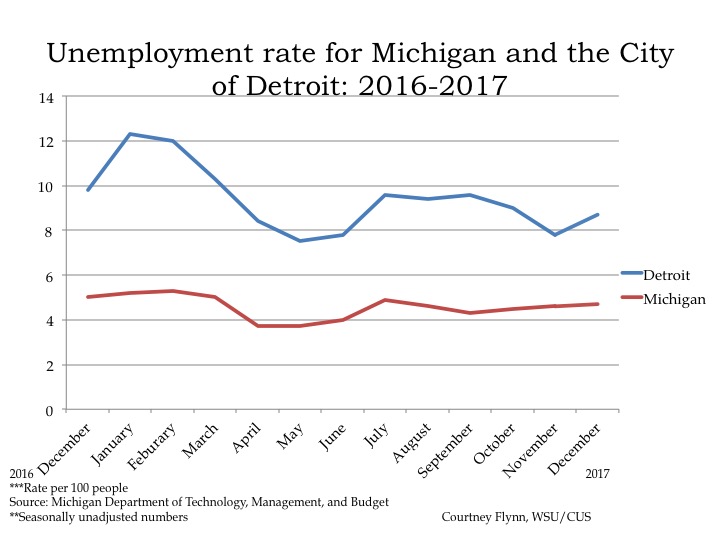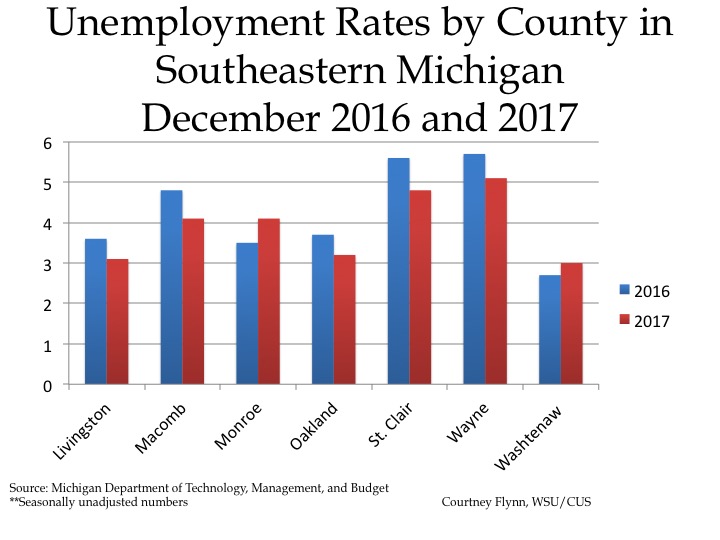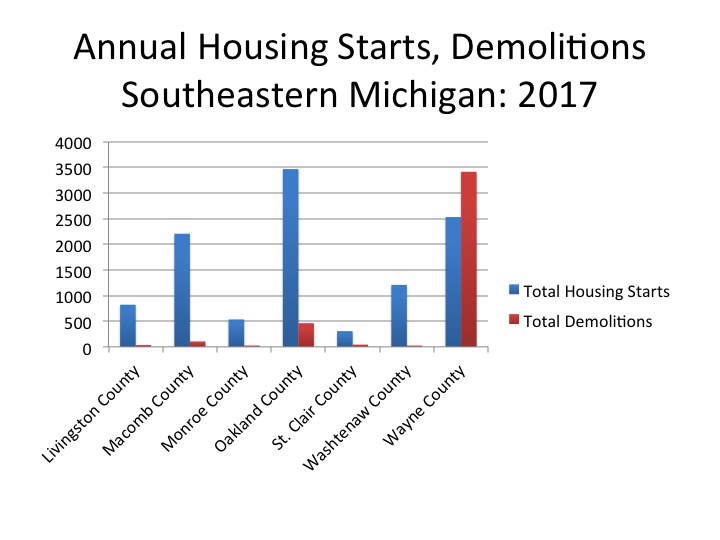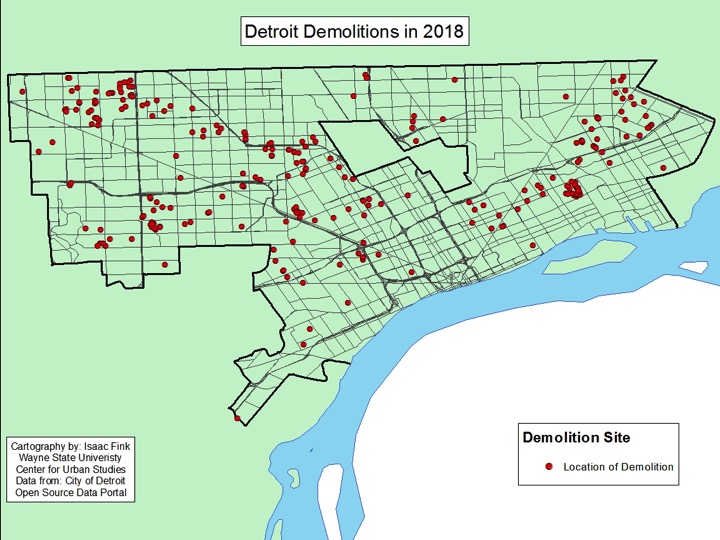- The unemployment rate increased at the state and local levels(monthly);
- Regionally, Washtenaw County’s unemployment rate was the lowest;
- The number of demolitions in Detroit outweighed the number of building starts;
- Housing prices remained flat.
In December of 2017 the unemployment rate for the State of Michigan was 4.7, a slight increase from the November unemployment rate of 4.6, according to the most recent data provided by the Michigan Department of Technology, Management and Budget. The State unemployment rate for December was 0.3 points below what it was in December of 2016.
The Detroit rate was lower over the last year, but up for the most recently reported month. The City of Detroit unemployment rate was reported to be 1.1 points lower in December of 2017 than what it was reported at in December of 2016. For December 2017 the unemployment rate was reported at 8.7; in 2016 it was reported to be 9.8. Between November and December of 2017 though the unemployment rate for Detroit increased by 0.9 points.
The chart above displays the unemployment rates for each of the seven counties in Southeastern Michigan for December of 2016 and 2017. Wayne County had the highest unemployment rates for both 2016 and 2017 (5.7 and 5.1 percent, respectively). Washtenaw County had the lowest unemployment rates in 2017 and 2016 during the month of December. In December 2017 the Washtenaw County employment rate was 3 and in 2016 it was 2.7. Additionally, in December of 2017, Washtenaw and Monroe counties were the only two in the region that had unemployment rates higher than in December of 2016.
Wayne and St. Clair counties were the only two in the region with unemployment rates above 4.5 percent in 2017.
St. Clair County had the largest unemployment rate decrease between December 2016 and 2017 at 0.8. In December of 2017 St. Clair County had a unemployment rate of 4.8, and in 2016 that rate was 5.6.
Oakland County had the highest number of housing starts in 2017, according to the Southeastern Michigan Council of Governments, at 3,467. St. Clair County had the lowest number of housing starts in the region at 307, more than 3,000 less than Oakland County.
Macomb, Oakland and Wayne counties had the highest number of housing starts in 2017; these counties also have the highest population numbers in the region. Additionally, all three counties have experienced growth in the number of housing permits being pulled since 2010. Macomb and Oakland counties did experience a dip of about 400 each in 2014, but numbers continued to grow after this.
Wayne County was the only one in the region that had a higher number of demolitions than housing starts. All but 206 of 3,415 demolitions occurred in the City of Detroit, according to SEMCOG. In total, there were 3,209 demolitions in Detroit in 2017 and 1,084 housing starts in the same year.
Below is a map of all the demolitions in Detroit between Jan. 1 and Feb. 22, 2018. So far this year there has been 176 demolitions in Detroit, according to the City’s open data portal. The map shows that the demolitions are now occurring outside of the downtown/Midtown areas and instead farther out into the City. Some of the heaviest concentrations of demolitions are occurring in the West Village area of the City and in the far northwest area.
The above chart shows the Standard and Poor’s Case-Shiller Home Price Index for the Detroit Metropolitan Statistical Area. The index includes the price for homes that have sold but does not include the price of new home construction, condos, or homes that have been remodeled.
According to the index, the average price of single-family dwellings sold in Metro Detroit was $117,550 in November 2017; this was $300 lower than the average family dwelling price in October. The November 2017 price was an increase of $8,230 from November of 2016 and an increase of $14,140 from November of 2015 and an increase of $20,260 from November of 2014.








